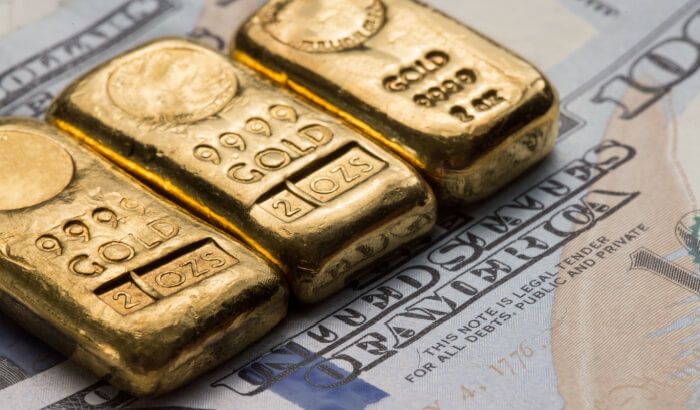
星期四 Sep 21 2023 15:41

7 最小

On Thursday, the price of gold (XAU/USD) weakened below $1,930 per ounce in early European trading hours, moving further away from its multi-week highs due to the prevailing strength of the U.S. dollar (USDX).
The dollar index, a gauge of the currency's strength against a basket of other major currencies, climbed as high as 105.59 in early trading today — its highest point since early March.
The currency’s rise followed a hawkish pause from the U.S. Federal Reserve — while the central bank maintained the target range for the federal funds rate at 5.25%-5.5%, as widely expected by markets, the released projections in the dot plot suggested the likelihood of one more rate increase later this year, followed by just two cuts in 2024.
Meanwhile, the Bank of England (BoE) is scheduled to announce its monetary policy decision later today, and investors are divided whether it will proceed with another rate increase or pause its tightening efforts in light of easing inflation in the UK.
The Bank of Japan is expected to provide an update on its monetary policy on Friday, and market participants are closely monitoring any indications of a potential shift away from the country’s policy of maintaining negative interest rates.
As of 11 a.m. CET on September 21, the gold spot price traded at $1,923 per ounce, according to Bloomberg data.
In its precious metals appraisal on September 18, German technology firm Heraeus outlined the commodity’s recent trajectory and forecasted a potential support level should the $1,900 mark give way:
Despite the decrease in the gold spot price, some analysts have noted that the commodity has not given in to persistent pressure from the U.S. dollar. Daniel Hynes, Senior Commodity Strategist at Australia-based bank ANZ, said the gold price successfully held up against the Fed’s hawkish tone on Wednesday:
ANZ added that shifting market expectations regarding the Fed’s terminal rate may limit the upside for XAU/USD in the near term.
The terminal rate represents the ultimate interest rate level that the Federal Reserve sets as its target during a cycle of either raising or lowering rates. This rate serves as the longer-term target rate at which both price stability and full employment are attained, often referred to as the neutral rate.
Ole Hansen, Head of Commodity Strategy at Saxo Bank, maintained a “patiently bullish” view on gold several weeks prior to the Fed meeting:
The bank had previously issued an eye-watering gold price prediction for 2023 in December last year, saying that the commodity could rise to $3,000.
Bank of America’s last gold forecast saw prices averaging the year around $1,923 an ounce — down more than 4% from their previous average of $2,009 an ounce, according to an observation by Kitco’s Neils Christensen. BoA stressed that the price of the yellow metal was “unlikely” to advance until the end of the Fed’s tightening cycle:
The gold price forecast shared by economic data aggregator TradingEconomics saw the commodity trading at a potential average of $1,946.33 by the end of this quarter. The platform’s 12-month gold price forecast had the yellow metal trading at $2,015.39 by mid-September 2024.
When considering gold and other commodities for trading and price predictions, remember that trading CFDs involves a significant degree of risk and could result in capital loss. Past performance is not indicative of any future results. This information is provided for informative purposes only and should not be construed to be investment advice.
